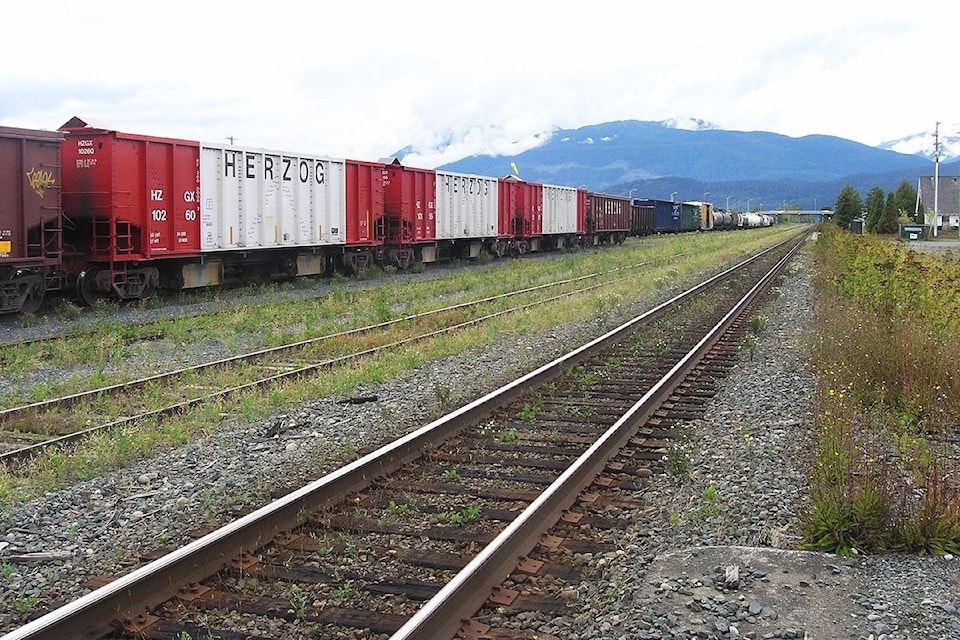A higher volume of exported goods from Terrace is needed to make a transloading facility “financially viable” for the municipality, according to a draft market analysis from the first phase of the feasibility study.
The purpose of the study is to identify a preferred location within city limits for a terminal that would allow cargo to be transferred from truck to rail, and vice-versa. Consultants will also develop a business case that will be used to attract private sector interest, encourage partnership and investment for the project.
A grant of $100,000 from the provincial Rural Dividend Fund was used to finance the two-phased report, which is part of the city’s 2016 Economic Development Strategy. Changes to this first portion could be made before a final draft of the report is released in the summer.
“They’ve given us a lot of information about industry that we can go to talk to and share with local businesses as well,” said Danielle Myles, the city’s economic development manager in a presentation to council. “It’s very interesting stuff.”
As the region diversifies its economy from forest-based to other industries, notably within the 2,400-acre industrial park development owned by Burnaby-based Chinese developer Taisheng International, a transload facility is vital for the offloading of raw material and transport of finished product to China via the Port of Prince Rupert.
Consultants identified several anchor products for the Terrace facility, including the export of local lumber to the U.S., cement from the Lower Mainland and wood pellets. However, “on their own, [the products] may not provide sufficient volumes to warrant development of a facility,” the report reads.
Terrace has the potential of transporting between 120- 480 cars of lumber per year, 190 cars of cement, and around 750 cars of wood pellets, but would still fall short of the 600-700 annual car threshold set by stakeholders.
“Volumes are pretty impressive, (but) there would need to be a couple more additional anchor tenants to use this type of facility,” said Myles. “They’ve identified one, more feasibly probably two, in order to get to the volumes that would take away a lot of the risk of this type of facility.”
The consultants also noted that a transloading facility in Terrace would be competing against an “increasingly developed logistics sector in Prince Rupert and the surrounding areas,” and that a transloading facility in Prince Rupert would actually be more desirable to stakeholders because of the potential to minimize transportation costs.
However, if the Port of Prince Rupert continues to grow at its current rate, consultants estimate that land in Prince Rupert may become constrained by the mid-2020s.
Lower land-development costs — $150,000-$250,000 in Terrace versus $1 million per acre in Prince Rupert — and existing available land could lead to consideration for a transloading facility in the future.
There will also likely be more goods moving in and out of Terrace as the Skeena Industrial Development Park builds out.
“Terrace could be well-positioned to help drive more volumes, particularly through the Port of Prince Rupert, and could become a very desirable place for a transloading facility,” said Myles.
LNG potential for SIDP
There is one particular commodity planned for the Skeena Industrial Development Park that could increase enough rail traffic to warrant a transloading facility — liquefied natural gas (LNG).
Both Prime LNG and Distributed Gas Solutions Canada Ltd. are considering developing micro-LNG facilities on SIDP lands and are currently working on feasibility studies, according to Richard Zhang, managing director of Taisheng International.
Natural gas arriving by pipeline would be liquefied and then loaded into tank containers for transport by rail from Terrace to Prince Rupert, and then onwards overseas to China.
Volume estimates are in the area of 1,000 40-foot containers per month (12,000 containers per year). Though none of the companies interviewed by consultants has made a final investment decision, potential operations could commence “sometime in 2020,” according to the report.
READ MORE: Industrial park developer still hopeful for 2020 completion
Steel fabrication, wood pellets, alfalfa processing are among some of the other possible industries mentioned within the SIDP.
A consultant will be completing the second part of the study this spring, with site investigation and evaluation expected in March or April.
Consultants will also explore ways to potentially provide closer rail access to properties at the SIDP.
—with files from Quinn Bender
